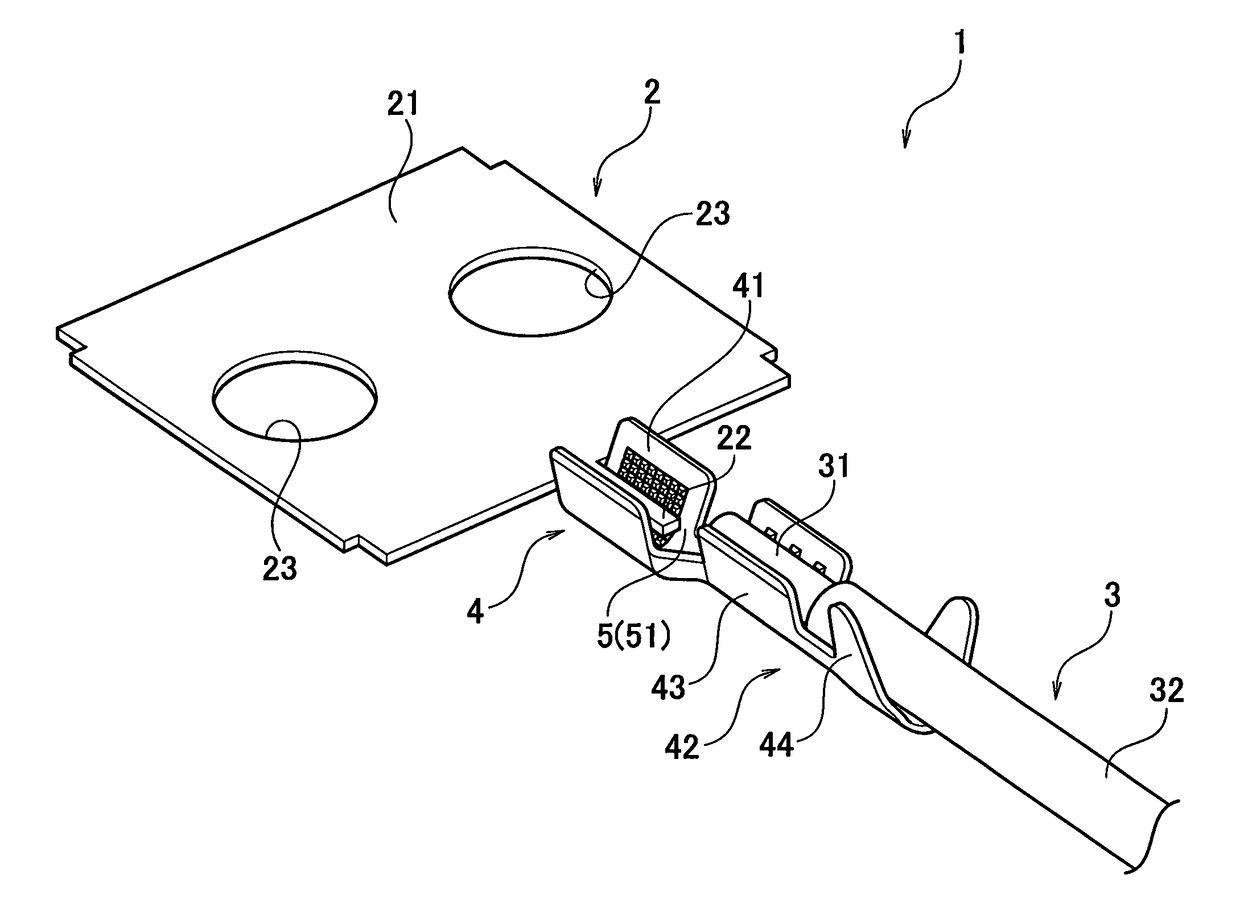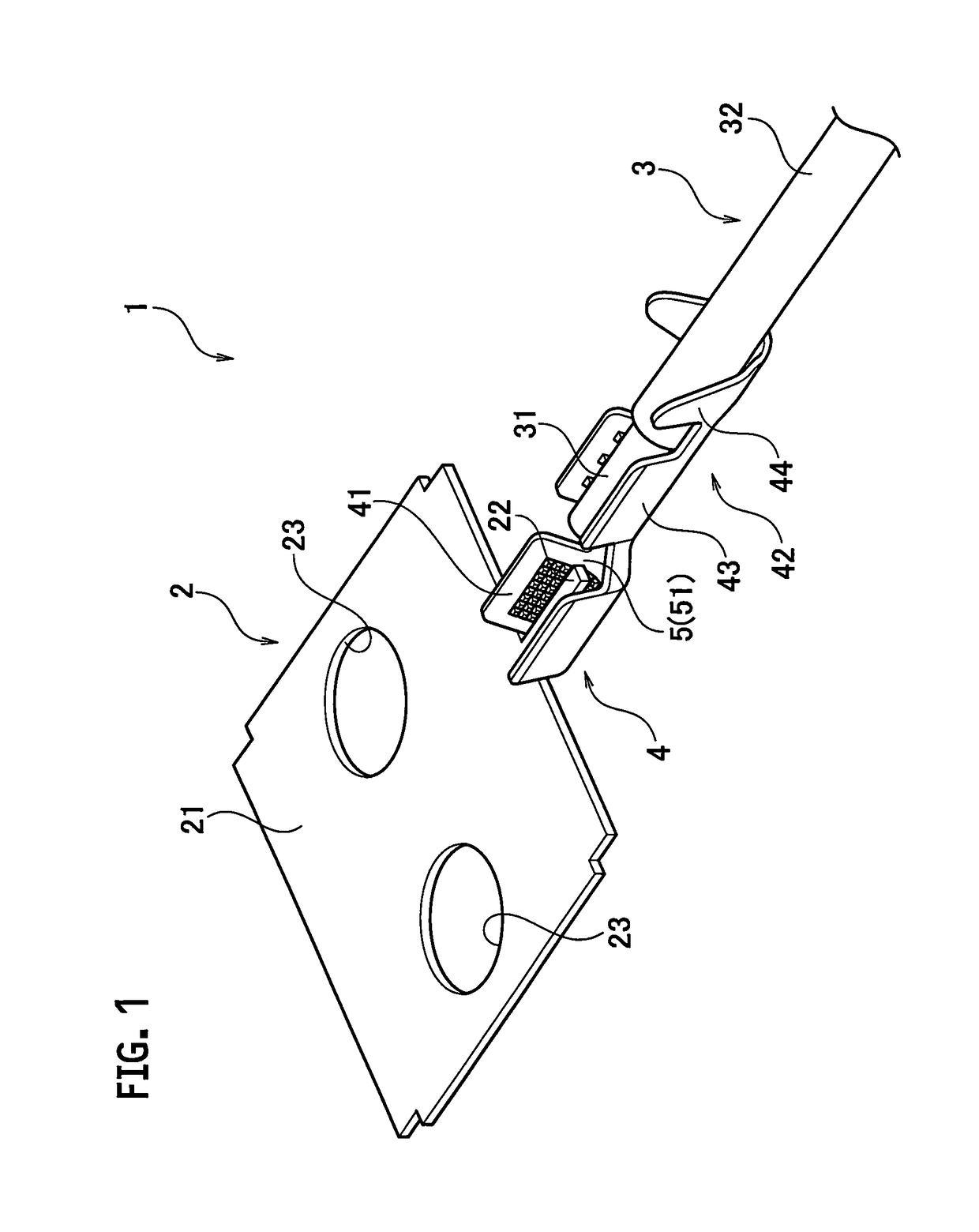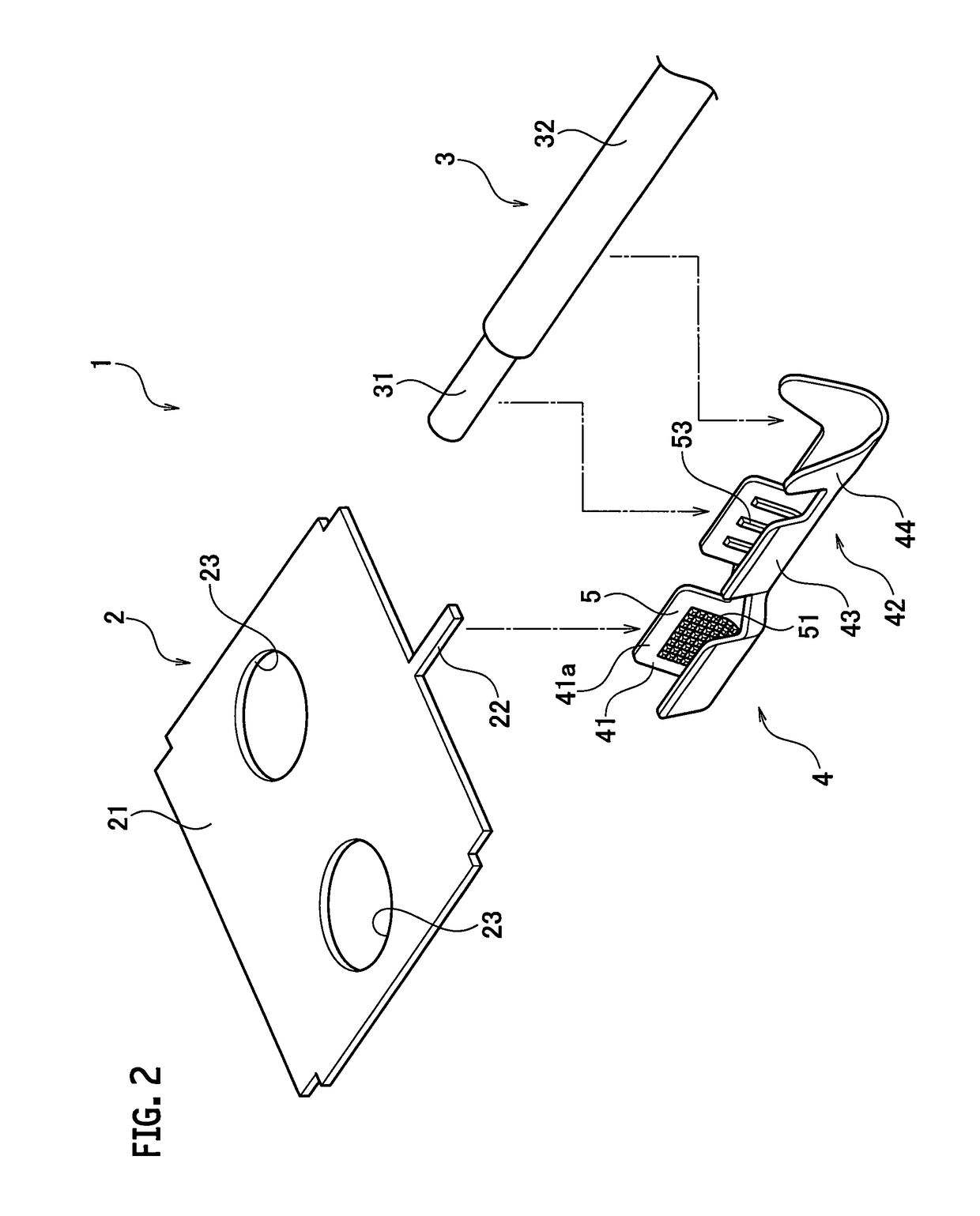Connecting structure for bus bar and electrical wire
a technology of connecting structure and bus bar, which is applied in the direction of connection contact member material, current conducting connection, cell components, etc., can solve the problems of poor connection reliability, complicated connection operation, heat generation, etc., and achieve the effect of preventing impairment of electrical connection performance, reducing the number of connections, and no increase in contact resistan
- Summary
- Abstract
- Description
- Claims
- Application Information
AI Technical Summary
Benefits of technology
Problems solved by technology
Method used
Image
Examples
Embodiment Construction
[0025]An embodiment of the present invention will be described in detail below with reference to FIGS. 1 to 3.
[0026]A connecting structure 1 uses a crimp terminal 4 to connect a bus bar 2 and an electrical wire 3 together. The connecting structure 1 is used in a power supply device mounted on an electric vehicle or a hybrid vehicle.
[0027]The power supply device (not illustrated) includes plural battery cells arranged side by side. Each of the battery cells has one end at which a positive electrode and a negative electrode protrude. The plural battery cells are arranged in such a manner that the positive electrode of one of the adjacent battery cells is connected to the negative electrode of the other battery cell. The bus bar 2 connects the adjacent battery cells in series or provides a connection between the battery cell and an external device. Thus, the number of the bus bars 2 for use in the connecting structure 1 is set according to the number of battery cells and the number of ...
PUM
| Property | Measurement | Unit |
|---|---|---|
| width | aaaaa | aaaaa |
| shape | aaaaa | aaaaa |
| voltage | aaaaa | aaaaa |
Abstract
Description
Claims
Application Information
 Login to View More
Login to View More - R&D
- Intellectual Property
- Life Sciences
- Materials
- Tech Scout
- Unparalleled Data Quality
- Higher Quality Content
- 60% Fewer Hallucinations
Browse by: Latest US Patents, China's latest patents, Technical Efficacy Thesaurus, Application Domain, Technology Topic, Popular Technical Reports.
© 2025 PatSnap. All rights reserved.Legal|Privacy policy|Modern Slavery Act Transparency Statement|Sitemap|About US| Contact US: help@patsnap.com



